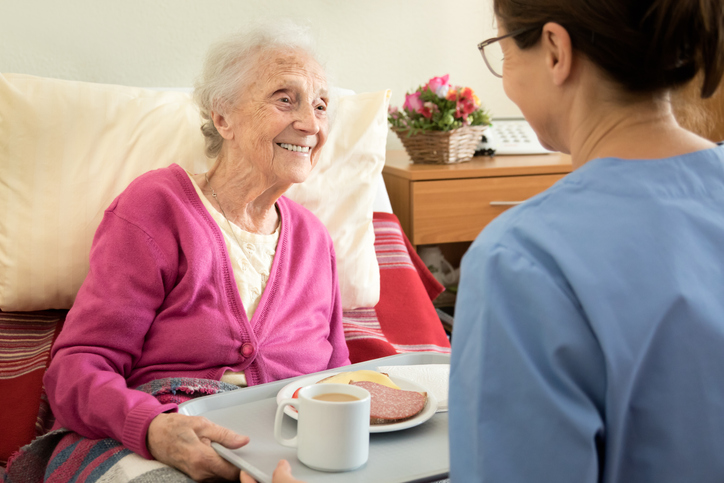
While a lot of attention is paid to overweight in healthcare and society, malnutrition often remains underexposed. ‘Completely unjustified, because the consequences can be just as serious,’ said epidemiologist Emiel Hoogendijk of Amsterdam UMC, who wrote an overview article about this in The Lancet. His plea: call in a dietician on time.
Guidelines for healthcare providers
Malnutrition among the elderly is still too common in our country, and more in care institutions and hospitals than among elderly people living at home. Hoogendijk: ‘This is generally known among care providers. Disease is an important risk factor for malnutrition, because people can or want to eat less. There is often little wrong with the identification of malnutrition in the hospital, but insufficient action is sometimes taken after the identification. Because there are other medical priorities. Or because it is not clear who exactly is responsible for the nutritional policy and who is in charge, even after discharge from the hospital. In that case, for example, nutritional advice is given, but no one monitors whether the patient complies with it. Or the doctor refers to a dietician, but no longer has any idea whether the patient actually goes there.’ Exactly what Hoogendijk and colleagues point out in The Lancet: there are good guidelines for healthcare providers, but they are insufficiently put into practice.
Muscle mass
That must change, Hoogendijk believes, because malnutrition can cause a cascade of serious effects in a very short time. ‘Weight loss quickly leads to a decline in muscle mass in the elderly. This can have functional consequences: move less, walk worse. The general condition decreases, the bones weaken and the risk of falling increases. As a result, people no longer like to go out and they become isolated. This in turn can have far-reaching psychosocial effects: people become lonely or experience a decline in their quality of life. So it concerns a wide range of mutually related complaints.’
Belly as spare
How can all this be prevented? Hoogendijk: ‘First of all by ensuring that muscle strength and muscle mass are maintained, with good nutrition and sufficient physical activity.’ He emphasizes: ‘Prevention and treatment are two different things. If someone is already malnourished, exercise is not the first goal. Then you want someone to strengthen first. However, regaining muscle mass at a later age is not easy.’ In an environment aimed at tackling overweight, this requires a different focus, Hoogendijk notes: ‘We pay close attention – rightly so – that the elderly do not become overweight, partly to minimize the cardiovascular risks. At the same time, we must continue to realize that being underweight can be just as dangerous. That a tummy in an elderly person may not necessarily be a problem, but rather the reserve that he desperately needs in the event of an operation or setback.’
Integral look
His plea is therefore: call in a dietician in good time. The best advice is different for each patient. We also need to look carefully at what is feasible in practice. The environment – family, friends, home care – plays an important role in this. ‘For example, create fixed and preferably joint eating times. That really helps to eat enough and varied,’ says Hoogendijk
Source: Amsterdam UMC




